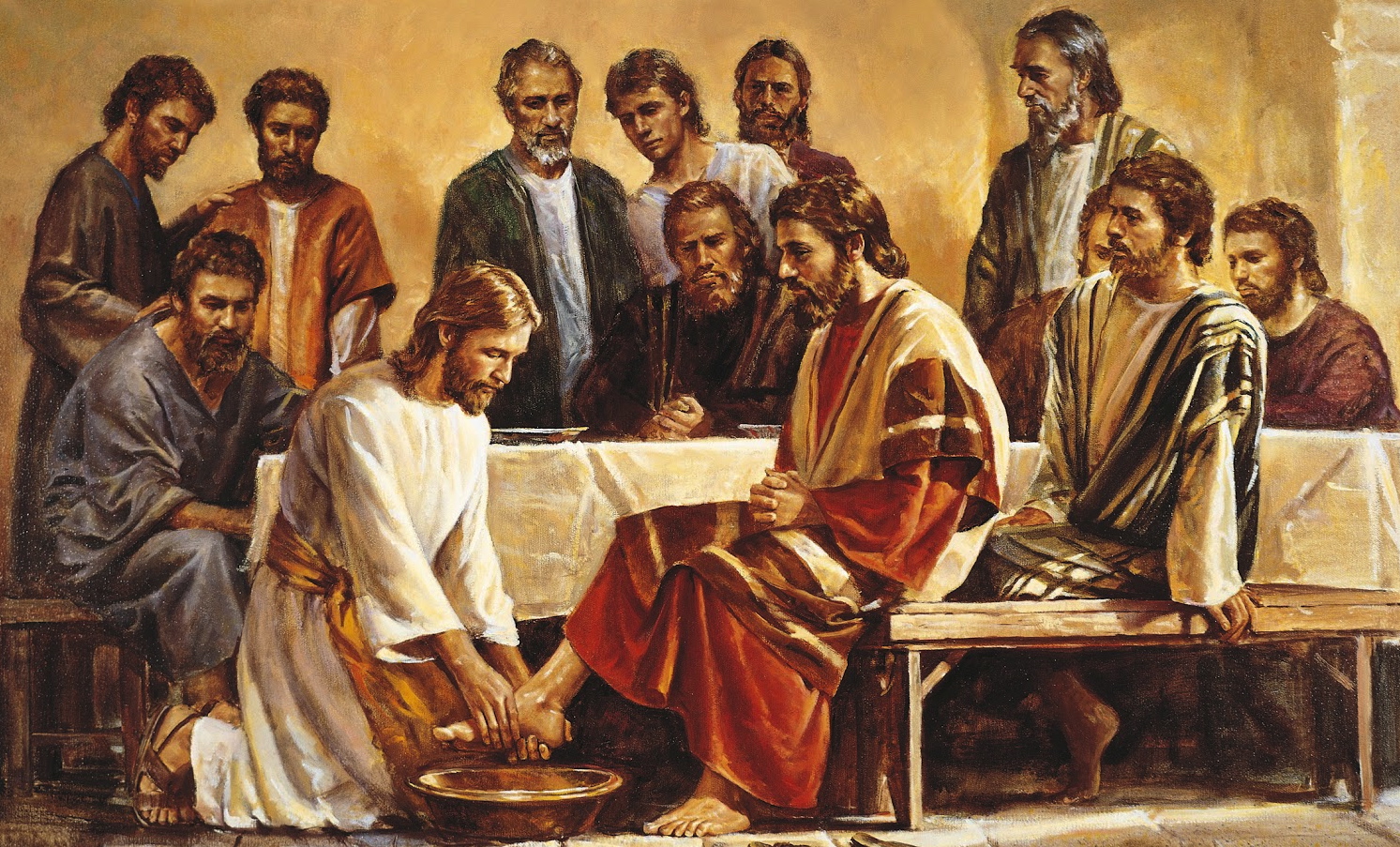
Christians observe Maundy Thursday to remember the Last Supper and Jesus washing his disciples' feet. Maundy is derived from the Latin word "command" and refers to Jesus' new commandment (Mandatum novum do vobis) to the disciples to "Love one another as I have loved you" (John 13:34).
Holy Thursday is the first day of the Holy Triduum, which includes last three days of the Holy Week. Triduum is taken from a Latin word meaning "three days," from the evening of Holy Thursday to Easter Sunday. It is a period that traces the final days of Jesus' life, death, and resurrection from the dead. Each day is traditionally marked with a particular liturgy. In human measure, it is 72 hours, but from a spiritual perspective, the oneness of the Paschal Mystery of Christ is revealed throughout one liturgical day.
Since 1956 Maundy Thursday has been celebrated in Roman Catholic churches with a morning liturgy for the consecration of the Holy Oils for the coming year. It is done at Se Cathedral in Old Goa on the Thursday before the Maundy Thursday to facilitate all the priests to participate and renew their priestly promises. The Archbishop blesses the Oil of the Catechumens (Oleum Catechumenorum) and the Oil of the Sick (Oleum Infirmorum), and consecrated the Holy Chrism Oil (Sacrum Chrisma).
What does it commemorate?
The events of Jesus Christ's final day on Earth are reenacted on Maundy Thursday. In the evening, the Church commemorates the Last Supper, which Jesus wished to have with his disciples before he offered himself as a sacrifice for human salvation. The Christians consider this meal as the institution of the Holy Eucharist, also known as the Lord's Supper or Communion (Luke 22). Jesus and his disciples gathered in a house in Jerusalem for the Last Supper, where they dined covertly.
At the Last Supper, Jesus breaks bread, saying, "This is my body," and pours wine, saying, "This is my blood." He then asks the disciples to "Do this in remembrance of me." And he did the same with the cup after Supper, saying, “This cup is the new covenant in my blood poured out for you” (Luke 22:19-20). Through the above words, Jesus makes it abundantly clear that his death and sacrifice were made for our redemption.
He extends the same invitation to Christians to join in a supper of faith shared by the faithful as he did to his disciples at the Last Supper. We are reminded that Jesus wants us to love and forgive one another by partaking in the Lord's Supper. The word "Maundy" is a representation of this directive.
Why washing of the feet?
Maundy Thursday is also associated with ritual of washing of the feet. Jesus took a basin of water and washed the feet of his disciples (John 13:4-15). According to myths, metaphors, foot is a symbol of respect, reverence, and subservience, and feet washing and anointing is an act of humility and love. Jesus meant to teach humility and selflessness to his followers and, through them, to everyone. This is the epitome of "servant leadership." Jesus teaches his disciples to serve and to love one another, particularly those in need in our world today.
Jesus says he won't eat anything again until the coming of the kingdom of God (Luke 22: 16), foretelling his death. Moreover, it represents a betrayal. Jesus predicts that "one of you will betray me." Jesus identifies Judas Iscariot, one of his twelve followers, as the one who will betray him.
Maundy Thursday services frequently end with the sanctuary being stripped in complete silence and in a slow, deliberate manner. The custom dates back to the seventh century and was initially used to clean the sanctuary in time for Easter, when everything is renewed. But through time, the ritual evolved into a separate ceremonial function.
Communion utensils, tablecloths, pulpit and lectern hangings, and all other liturgical items are meticulously removed in silence to dramatise the emptiness, abandonment, and gloom of our Lord's Passion and death. The sanctuary remains bare until the beginning of the Easter celebration. At the end of services, everyone leaves in silence. Christ is now in the hands of his captors, symbolically having lost all of his might and splendour.